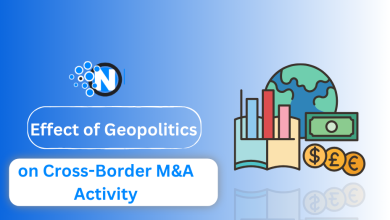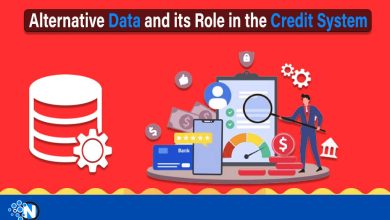The Interplay of Demand Forecasting and Inventory Management in Procurement

Procurement teams are stuck between shifting consumer demands and volatile international markets, putting supply chains under more strain than before. Companies that fail to link inventory management with demand forecasting often end up with either expensive overstocks or disastrous shortages. It is now important to align these disciplines to meet service expectations, preserve resilience, and reduce costs.
In this blog post, I will explain how the link between demand forecasting and inventory management truly powers a responsive, cost-effective, and resilient supply chain.
Demand Forecasting in Procurement
Fundamentally, demand forecasting is the technique of projecting future consumer demand using market patterns, historical data, and outside cues. Accurate forecasting in procurement guarantees that decisions about purchases correspond with anticipated consumption.
Different forecasting models are specific to some needs. Although quantitative forecasting techniques such as regression and time-series analysis provide tangible forecasts of future behavior by analyzing past actions, qualitative tools such as market research and opinion polling are useful in volatile situations. In order to identify the trends in different streams of data, progressive enterprises are taking the risk of trying AI based prediction of demand services, including cloud procurement platforms.
Modern businesses can also significantly increase cost effectiveness and customer satisfaction by using advanced forecasting tools to reduce supply chain planning errors by 30 to 50%.

Forecasting Models and Tools
| Method | Accuracy Level | Scalability | Cost Efficiency | Example Use Case |
| Time-Series (ARIMA, Moving Average) | Medium | High | High | Stable retail sales patterns |
| Regression Analysis | High | Medium | Medium | Price-sensitive industries |
| AI-Based Machine Learning Models | Very High | High | Medium-High | Multi-variable demand environments |
AI-driven forecasting is especially powerful in industries where external disruptions, such as energy price swings or weather events, strongly affect demand.
Inventory Management Fundamentals
While forecasting predicts needs, inventory management ensures that the right products are available at the right time without excessive holding costs. The main objectives are service level assurance, cost minimization, and process efficiency.
Common approaches include:
- Economic Order Quantity (EOQ): Balancing order costs with holding costs.
- Safety Stock: Buffering against uncertainty in lead times or demand.
- Just-in-Time (JIT): Reducing carrying costs by synchronizing deliveries closely with production schedules.
Metrics such as inventory turnover, carrying cost percentage, and fill rate are essential to monitor. High turnover suggests efficient operations, while excessive carrying costs often signal poor alignment with demand forecasts.
Strategic Inventory Control Methods
In order to prioritize resources where they have the biggest impact, procurement professionals frequently utilize ABC categorization to divide inventories by value and frequency of usage. Monitoring reorder points and modifying lead times in accordance with supplier performance are two more crucial procedures. Organizations can anticipate interruptions before they happen by combining supplier indicators with inventory demand forecasting.
Linking Demand Forecasting and Inventory Management
Procurement can work precisely when inventory management and demand forecasts are closely linked. Buyers may organize orders according to supplier lead times with the help of accurate estimates, preventing warehouses from overflowing or running empty.
This relationship is particularly beneficial to industries with a short product cycle such as electronics and retail. Manufacturing synchronous planning eliminates production stoppage due to components that are missing. Correct alignment ensures that the necessary supplies are present at all times in the healthcare sector, where a lack may endanger lives.
Benefits of Integration
- Cost Reduction: Lower holding costs and reduced emergency purchasing.
- Supplier Alignment: Improved scheduling strengthens relationships and supports long-term contracts.
- Risk Mitigation: Organizations are better positioned to handle volatility, such as sudden demand spikes or global supply chain disruptions.
Risks of Misalignment
Poor coordination between forecasting and inventory processes creates costly inefficiencies:
- Overstocks that tie up working capital and increase storage expenses.
- Stockouts that lead to lost sales, operational disruptions, or reputational damage.
- Reactive Procurement that erodes negotiation power when urgent, last-minute orders become routine.
Data-Driven Procurement Analytics
Procurement analytics are increasingly supporting the link between inventory and forecasts. Demand signals, supplier lead times, and past purchasing histories are all visible on centralized platforms. Procurement teams can move from reactive ordering to proactive planning with this transparency.
Key KPIs for Integration
| Metric | Definition | Impact on Procurement |
| Forecast Accuracy | % of demand correctly predicted | Reduces safety stock, prevents shortages |
| Inventory Turnover Ratio | Frequency stock is sold and replaced | Indicates efficiency of inventory utilization |
| Fill Rate | % of demand met directly from available stock | Reflects service level and customer satisfaction |
| Carrying Cost % | Cost of holding inventory as a % of total value | Highlights potential inefficiencies |
Procurement leaders emphasize that forecast accuracy and turnover are the most critical measures, as they directly affect both cost and customer service.
Technology Enablers for Forecasting and Inventory Management
Digital solutions have transformed procurement workflows, enabling real-time insights and process automation. The growing adoption of cloud procurement platforms highlights how integrated data can align forecasts with purchasing decisions seamlessly.
AI and Machine Learning in Forecasting
In addition to previous sales, machine learning algorithms also takes into account macroeconomic statistics, weather patterns, and political happenings. These algorithms keep on adding accuracy, and they give out predictions that are dynamic to the evolving conditions.
ERP and Cloud Integration
By integrating procurement platforms with enterprise resource planning (ERP) systems, projections are converted into purchase orders automatically, minimizing approval delays and human error.
Continuous Improvement Practices
To be effective in the long run, real-time dashboard, joint planning with suppliers and frequent reviews of the precision of predictions are essential. Companies that incorporate feedback mechanisms in their sales, logistics and procurement processes constantly do better than companies that follow single-purpose approaches.
Conclusion
The interaction between inventory management and demand forecasting defines the ability of procurement to strike a balance between resilience and efficiency. Analytics connects the two, inventory management executes the plan, and forecasting establishes it. Proactive procurement, where accurate forecasting and clever inventory control ensure both profitability and service dependability, is replacing reactive ordering as technology develops.




